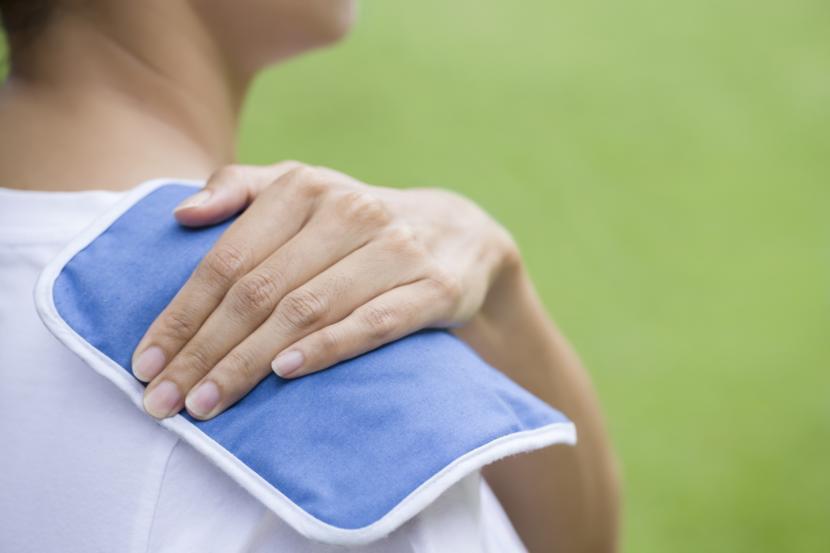Rheumatoid Arthritis Treatment: Hot or Cold?

Ever heard of Icy Hot? Temperature-based therapies have been around for ages. Heat pads and ice packs have long been used to relieve all sorts of aches and pains of the muscles and joints. Rheumatoid arthritis is no exception, but how are these treatments used best for joints specifically affected by RA?
Let's talk about some ways you can adopt this simple, inexpensive, and safe homeopathic treatment to relieve your rheumatoid arthritis.
Thermotherapy: What is it?
Doctors and physical therapists refer to temperature-based therapies as thermotherapy. These methods are used to soothe aching joints and relieve pain caused by rheumatoid arthritis temporarily. Though there is no scientific evidence that proves its benefit, a review that was recently published by the Cochrane Collaboration endorsed its use as a supportive, palliative therapy. Either way, it seems like it doesn't do much harm to try. Anything that can potentially help relieve your pain is something worth giving a shot!
The review that was done looked at hot and cold treatments that are commonly used for rheumatoid pain. They found that moist heat applied superficially, as well as cold packs or cold baths, are safe for people to use as supportive therapy. Paraffin wax baths, when used alongside regular exercises, can also help those with affected hands.
How heat can relieve stiffness in our joints
Heat therapy may seem contradictory when trying to relieve hot inflammatory pain associated with arthritic joints, so how can it help relieve rheumatoid pain? Turns out that heat can promote circulation and blood vessel dilation. It can also help relax muscles and reduce tension. Better circulation can help the blood wash out the inflammatory cells, and reduced muscle tension puts less stress on an already stressed-out joint. Usually, something mild is best, such as warm cloth fresh from the dryer, or a soft heated blanket in the morning.
It's easier than you think to start using heat therapy
There are lots of things probably already lying around your house that you can use for heat therapy. Things like hot towels, a hot bath or shower, hot water bottles, and heated blankets are great for delivering soothing warmth to an aching joint. If you're interested in specialized heating devices, there are many options available at your local drugstore. There, you can find things like microwaveable pads and electric heating pads that can easily provide soothing heat to your rheumatoid joint.
When should you be doing heat treatments?
The best time to apply heat therapy for rheumatoid pain is in the morning. This is because while you sleep, there is less cortisol around to suppress the inflammation. That's why rheumatoid stiffness and pain is most pronounced when you first wake up, at which time your cortisol levels are at its lowest during the day. Using some gentle heat therapy in the morning can help you get on with your day with improved pain and range of motion. A small improvement can mean a huge difference in terms of your ability to go about your activities and engage in physical therapy.
What are paraffin baths and how can they help?
A different kind of heat therapy you may or may not have heard of is a paraffin bath. This is a bath of wax which is similar to what nail salons use to help soften skin and nails. It works by using heated wax to warm your hands, wrists, and finger. The wax will form a warm layer coating your joints, after which you wrap your hands with a towel to contain the moist, deep heat emitted by the wax as it cools. A paraffin bath can help alleviate a lot of the stiffness of rheumatoid arthritis. It's best to use first thing in the morning when joints are stiff, but not yet in pain. If your joints are acutely inflamed, it's actually best to avoid the paraffin bath because the heat can aggravate the inflammation and increase swelling.
If you don't have access to a wax bath, you can substitute this therapy with a simple warm compress. Things you can use around the house include hot water bottles or a towel soaked in hot water. Research has shown evidence that warm compresses relieve pain and stiffness in rheumatoid pain, and can even help improve hand and finger range of motion if used with exercise.
Don't forget about cold therapy too
Now that we know all about the hot, what about the cold? Cold therapy is great for helping reduce inflammation in its acute phase. Cold also reduces swelling, which can make a huge difference in a stiff and painful arthritic joint. Because of these benefits, cold therapy is the best choice of thermotherapy during an acute rheumatoid flare as opposed to stiffness.
You can use simple cold therapy at home by applying cold packs to an achy joint. Cold packs are commonly found items that may already be in your household. For example, a bag of frozen peas can work just as great as your standard gel ice pack. There are also specialized cooling packs shaped for certain regions of the body such as the back, knees, and neck.
Try a cold water bath at home
If you're suffering from pain and stiffness in multiple joints, you may even opt for a full-body cold treatment. It's easy enough to do at home. Just fill a tub full of cool water and let your body soak. You can make this a relaxing event too by lighting some scented candles for aromatherapy. Baths are great for relaxing with a book or simply listening to some music or a favorite podcast. Just don't let the water get so cold that you get uncomfortable!
Cooling sprays and ointments are great, too
If you're not into taking a cool-water bath, or maybe it's the dead of winter and it would be anything but relaxing, try some over-the-counter sprays or ointments to do the job. Drugstores sell these products, such as Biofreeze and Cryoderm, that can deliver a cooling sensation to inflamed joints and numb the pain in your nerves, too.
Take care when using thermotherapy
Be wary of overdoing it if you're using at-home thermotherapy. When using heat therapy, make sure not to burn yourself by accidentally making the treatment too hot. To prevent burning, don't ever use the heat for extremely long durations. If using commercial products, never use the device longer than guidelines listed by the manufacturer. Pay attention and check your skin while undergoing heat therapy, and remove the heat if your skin starts to get red.
Cold therapy can sometimes cause discomfort too in excess. Try not to use cold packs directly on your bare skin, but instead, protect your skin with a thin towel or cloth. Using cold therapy for less than 15 minutes can also help reduce the chance that you'll give yourself frostbite. If you're hoping to do repeated treatments, always let your skin recover to a normal temperature before reapplying the therapy again.
Thermotherapy is worth a shot
So there you have it, some inexpensive and easy ways that you can help improve your rheumatoid pain at home. While it won’t cure your RA, thermotherapy is a great, do-it-yourself way to help relieve the pain and stiffness you may be suffering.
References
https://www.everydayhealth.com/rheumatoid-arthritis/treatment/hot-and-cold-therapy/
















